Gustard A26 DAC Review - Can It Get Any Better?
Upon completing my evaluation of the Gustard R26 R-2R ladder DAC and determining it to be one of the most exceptional sounding DACs I have encountered, I decided to purchase a silver unit to complement a silver Chord Electronics stack in my living room and the white Trafomatic Primavera in my office.
It was fulfilling to be able to thoroughly test every feature and share my findings with you. On the other hand, I felt a sense of sadness knowing that it is unlikely that a similar-sounding unit at a similar price point will be available shortly. Crafting truly exceptional DACs requires a significant amount of time and dedication, with some manufacturers spending years, even decades, perfecting their creations. The Gustard R26 was crafted in such a way that I could confidently recommend it without even listening to it. The internal layout was superb, the component selection was top-notch and a sprinkle of creativity resulted in a product that earned our Gold Award and was later purchased by yours truly. It can’t get any better than this…or can it?
Imagine me being unwell for a few weeks due to an outbreak of an epidemic in December last year and out of the blue I’m getting an email from Aoshida-Audio requesting a world-first written review for an upcoming Gustard DAC that they assured would be comparable in sound quality to X26 PRO and R26 models. This news lifted my spirits and renewed my energy. I even found the strength to crawl into my office and listen to some fine tunes on R26 connected to a Trafomatic Primavera. For a few hours, I immersed myself in my musical paradise, filling my heart with joy at the thought of testing yet another top-of-the-line Gustard-made D/A converter.
Double-transformers, discrete analog output stages, AKM’s newest and highest performing silicon working in a dual-mono configuration and an overkill clocking system that includes a wired streamer/renderer on the same board are again included. You sneaky Gustard, you did it again with A26 and instead of rising its price, you defy logic and laugh in the face of competition by lowering it to $1500?! Gustard…take a chill pill as you’re clearly on fire. The A26 DAC arrived a while ago, the burn-in is now finished, I can finally move mountains and I’m finally able to put my writing skills to good use, so what are we waiting for? Let’s dive in and examine its performance in both a stereo and head-fi setup.

Design & Build Quality
For more than two years, Gustard have been gradually improving their designs, slowly polishing those raw edges of X26 PRO for a more refined look. Their R26 was almost perfect, liking almost everything about it except for the odd lines around its display. It didn’t look symmetrical, and the power button for some reason reminded me of DIY cases. Gustard went back to the drawing board and came back with a 100% symmetrical design, positioning its display exactly in the middle, getting rid of all its physical buttons, and replacing them with elegant touch panels. This is one cool-looking DAC and its user-friendly interface are making it future-proof. It’s a massive positive change coming from raw aluminum edges and bundled Mini-CDs found on A22 and X26 PRO to touch panels on A26. Moving its documentation online was a welcome change as well.
Apart from that, we are still looking at an elegant unit with a high WAF attached to it. I had complained about the raw and unpolished look of their older devices, but the A26 feels way more refined from any point of view. High-end electronics are becoming modern furniture, and I like when they blend seamlessly with their surroundings, and I can certainly see that on the A26.
It uses a machined aluminum case, which comes in matte black or matte silver. I have played with both finishes and found them resistant to scratches and you should pick the one that suits your needs. The same, legendary feet are still present, which are honestly the best feet I’ve seen on any DAC. I appreciate the knurly metallic texture, the elevation (not too close to the table) for better ventilation, and the padding that absorbs micro-vibrations coming from within its electronics. Gustard’s craftsmanship improved year after year, putting a higher attention to the smallest details and I can no longer complain about its fresh look and outstanding build quality.
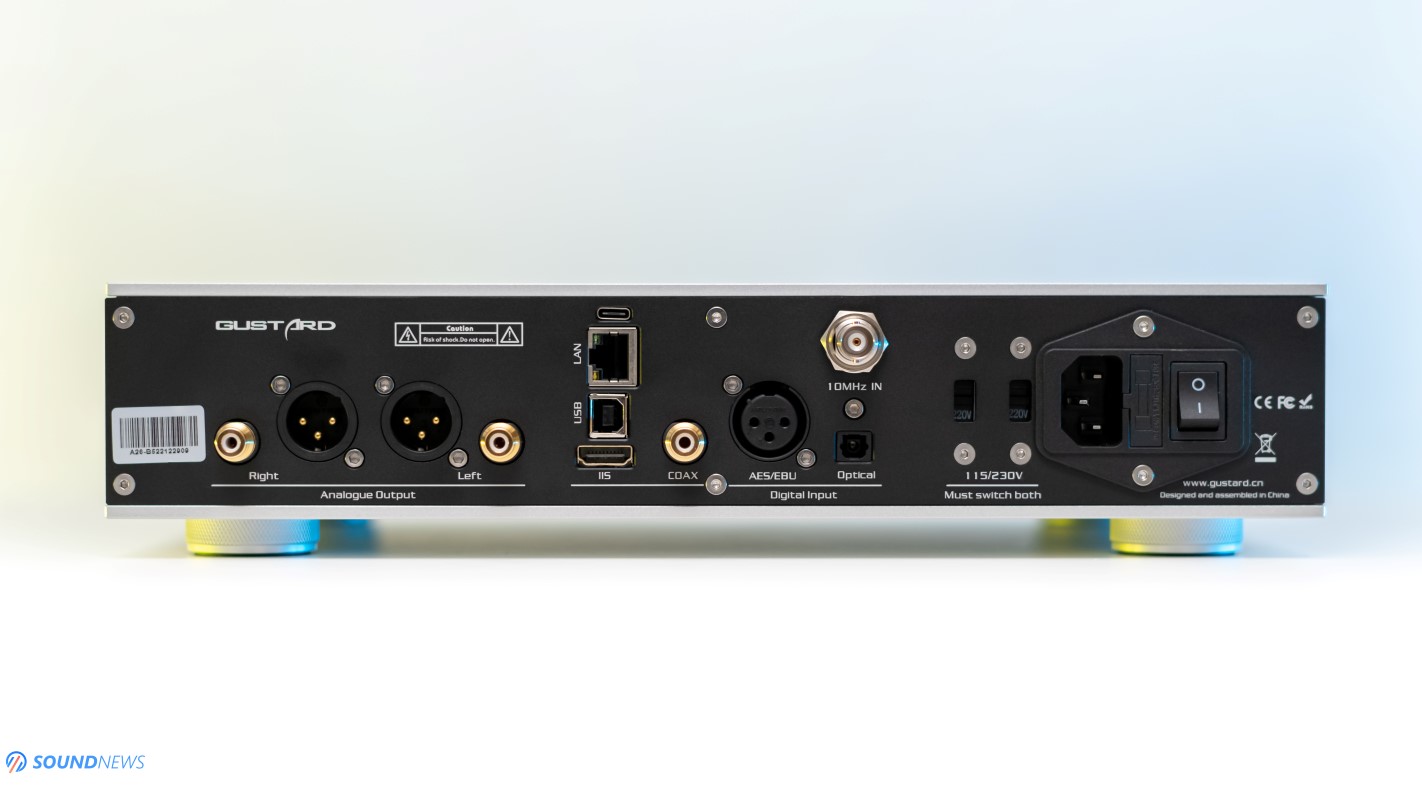
Controls & Connectivity
The A26 is much easier to operate than ever before, and you don’t even need its remote control in a head-fi setup. Its front panel is more intuitive than ever before, with a standby touch button on the left, a large monochrome OLED screen in the middle, and three touch buttons on the right - two for volume control and another one will change digital inputs on short presses or access user interface on long presses. On the back, you can find the widest variety of digital inputs such as USB Type-B, USB Type-C (used for firmware updates), I2S via HDMI, Coaxial, Optical, AES, a 10Mhz clock input that we already saw on R26 and X26 PRO, and an Ethernet port that allows you to play music directly from Roon or UPnP servers, which I will be testing soon. The usual RCA and XLR outputs are present configurable as fixed or variable, depending on the setting, meaning that you can use it as a DAC and preamp if you wish. It has two voltage switches and you can select between 115 or 230 V operation, wired directly to a pair of custom 50W linear transformers. Make sure that both are showing a correct AC voltage before powering on the unit!
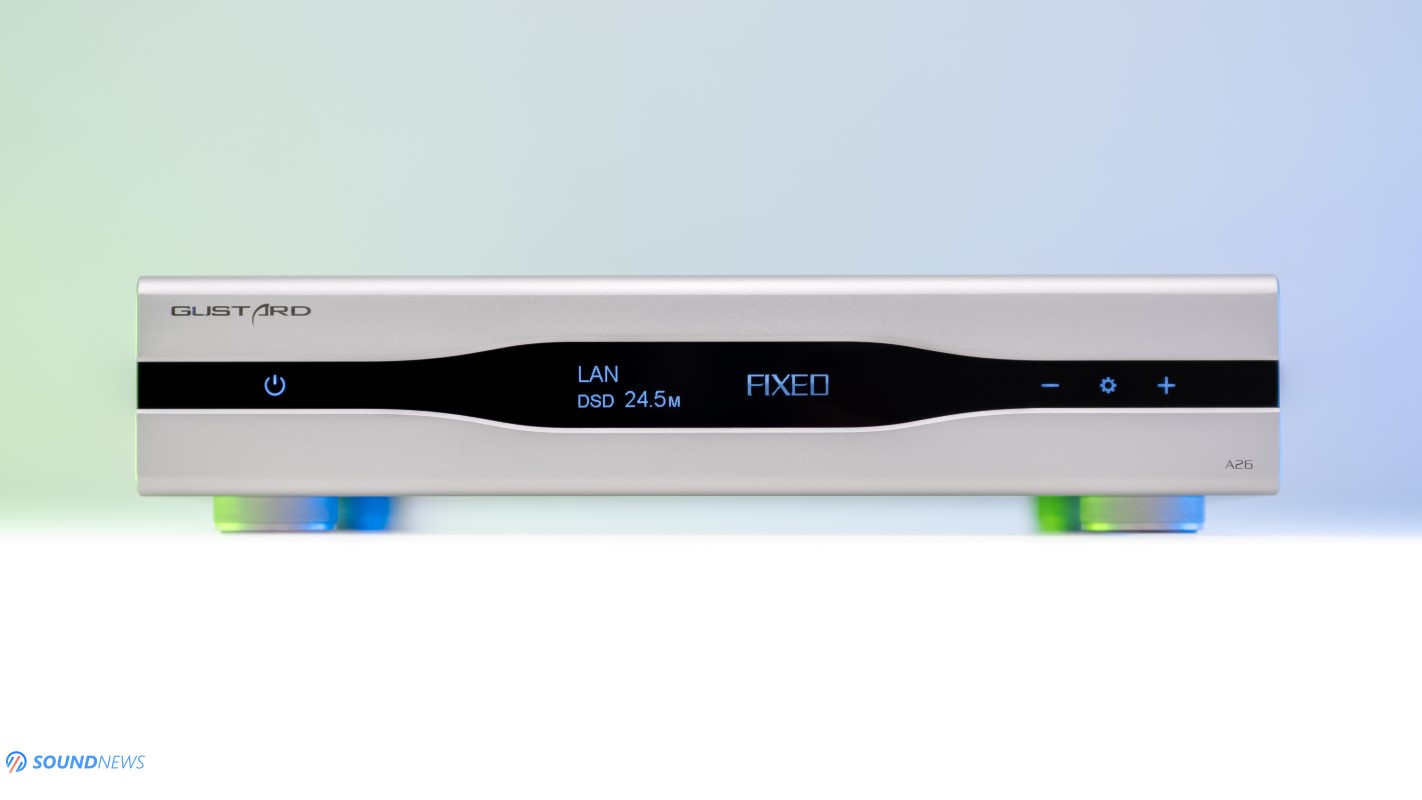
Menu Settings
Several settings are intended for advanced users and since you won’t find a user manual in the package, I will explain every feature individually so you can set it for optimal performance. Long-press the settings touch button or press the menu button on the included remote control and something like this will appear on its display:
- PCM Filter - You can choose between six digital filters provided by AKM, which are working on the hardware level. The first one sounds the most accurate, while the Super Slow Roll-Off filter sounds the most natural to my ears. Some of them are sounding quite similar and the differences are subtle at best.
- DSD Filter - Two options are provided. You can choose between a Narrow Bandwidth for a smoother top-end or a Wide Bandwidth for extended treble delivery.
- DSD Direct - Two positions are provided: OFF (default) or ON. Enabling it will disable internal DSD processing, sending the raw DSD stream into the DAC chips for a clearer and faster sound. Be warned! After enabling this feature, the volume cannot be controlled, outputting full power into your amplifiers. Don’t use this feature while using power amplifiers that can’t control the volume output.
- REF Clock - Two positions are provided: Internal (Default) or External 10 MHz. You can either choose the internal clocking system (which is a high-performance one) or an external 10 MHz clock generator (like Gustard’s C16 or C18 units, which can be purchased separately). Leave it at Internal.
- Sound - Two additional filters are provided, developed by AKM engineers. You can choose between Listening and Monitoring modes, the latter sounding flatter and the former livelier to my ears.
- Attenuator - Three positions: Auto (default), Off, or On. In the default position, the A26 will enable its analog volume control if the volume is lower than -24dB, which should not lower its dynamic range. The OFF position disables the analog and digital attenuators outputting a fixed voltage, and the On position enables its volume control. Leave it at Auto if you are using it as a DAC and preamp combo, or disable it when used as a DAC-only unit.
- Phase - Two positions are provided: Non-Inverted (default) or Inverted. Self-explanatory, leave it at default.
- Brightness - Five positions are provided. Since we are dealing with an OLED panel that could potentially burn-in, please don’t use the brightest setting for long periods of time. The Screen Saver option seems like the best option for a long service life.
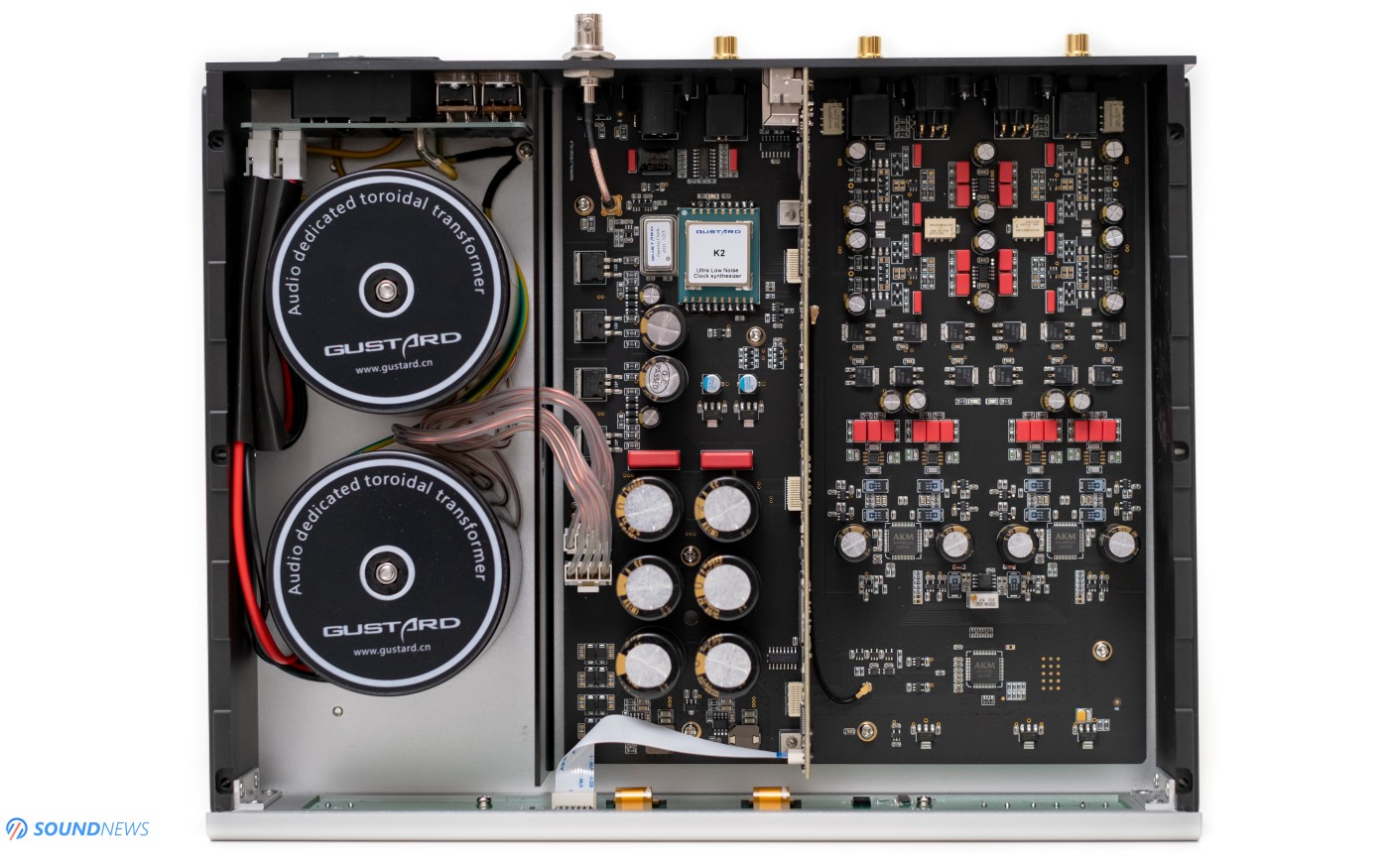
Tech Inside Gustard A26
A26 uses a similar layout to that found on R26, perfectly arranged and split into three rooms with thick metal plates in between. As opposed to R26 Discrete, we are dealing with an oversampling unit that uses the newest and highest-performing silicon of Asahi-Kasei Microdevices or AKM for short. AK4499EX superseded the AK4499EQ in Q3 2022 as their best one yet. Compared to its older 4-channel sibling, the newest silicon is a dual-channel one, meaning that for a fully-balanced signal two DAC chips will be needed and that’s exactly what Gustard employed in their A26. The newest silicon no longer has an internal delta-sigma modulator, meaning that an additional chip will be needed for that specific task. AKM recommends the AK4191 modulator as being the best match, specifically designed for AK4499EX and again we can spot it on the digital board.
In simpler words, what a single AK4499EQ chip could do a few years ago was moved into three separate devices, two AK4499EX (for a fully balanced signal), and a single AK4191 used as a premium delta-sigma modulator. Since every chip does its own thing never to be bothered with additional tasks, the noise floor and distortion lowered, the sound became faster and more accurate than ever before.
In the first room you can spot two encapsulated 50W linear transformers, which are on the heavier side. You can certainly feel their weight on that part of the case. One transformer is powering the analog section and the second one the digital section, which is an amazing design decision, something I already saw on X26 PRO and R26.
In the second room you can spot the second most important part of the unit - the timing that is being controlled by a Clock synthesizer, helped by a fairly large atomic (femto-second) crystal clock. Like the X26 PRO and R26 before it, A26 uses a custom-built Ultra-Low-Noise Clock Synthesizer which was called K2, integrated into a jitter reduction architecture. K2 can work with either its internal femto-second clock or with external 10Mhz Clocks, such as their C16 or C18 generators and there are many other options, even of a higher quality (read: much pricier) as well.
Custom-made clocks and synthesizers (PLL) are usually found in five-figure units, certainly not at this price point and that makes me already excited. Besides dealing with the clocking system, the board in the middle houses an overkill power filtering stage with the help of Nichicon Gold Tune KG capacitors, specifically designed for audio applications. There’s a strong voltage regulation stage before and after those caps, further cleaning up the power delivery. There’s a vertical daughter board in between the second and third room that Gustard labeled as CPLD or Complex Programmable Logic Device that houses its Streamer/Renderer, the digital receiver (XMOS XU-216), the Clock management, and a second-order PLL. This isn’t only a very complex and highly sophisticated board, but one of the nicest-looking clocking and data management boards I have seen on a unit of this price.
The third and last room houses the digital-to-analog conversion stage and the analog output stage in the upper part of the board. Its output stage was crafted mostly from discrete devices such as diodes and transistors, which could have unlimited potential in the hands of a skilled engineer. The current-to-voltage (I/V) conversion stage seems to be a hybrid one, employing tens of discrete devices and an op-amp per channel.
All in all, as it was the case with R26 Discrete, everything seems over-engineered, starting with its power supply, filtering stages, clock management, error correction, and finishing with the analog output stage and D/A conversion. I don’t see major compromises, only high-quality components that will leave a big mark when music will start doing its mojo.
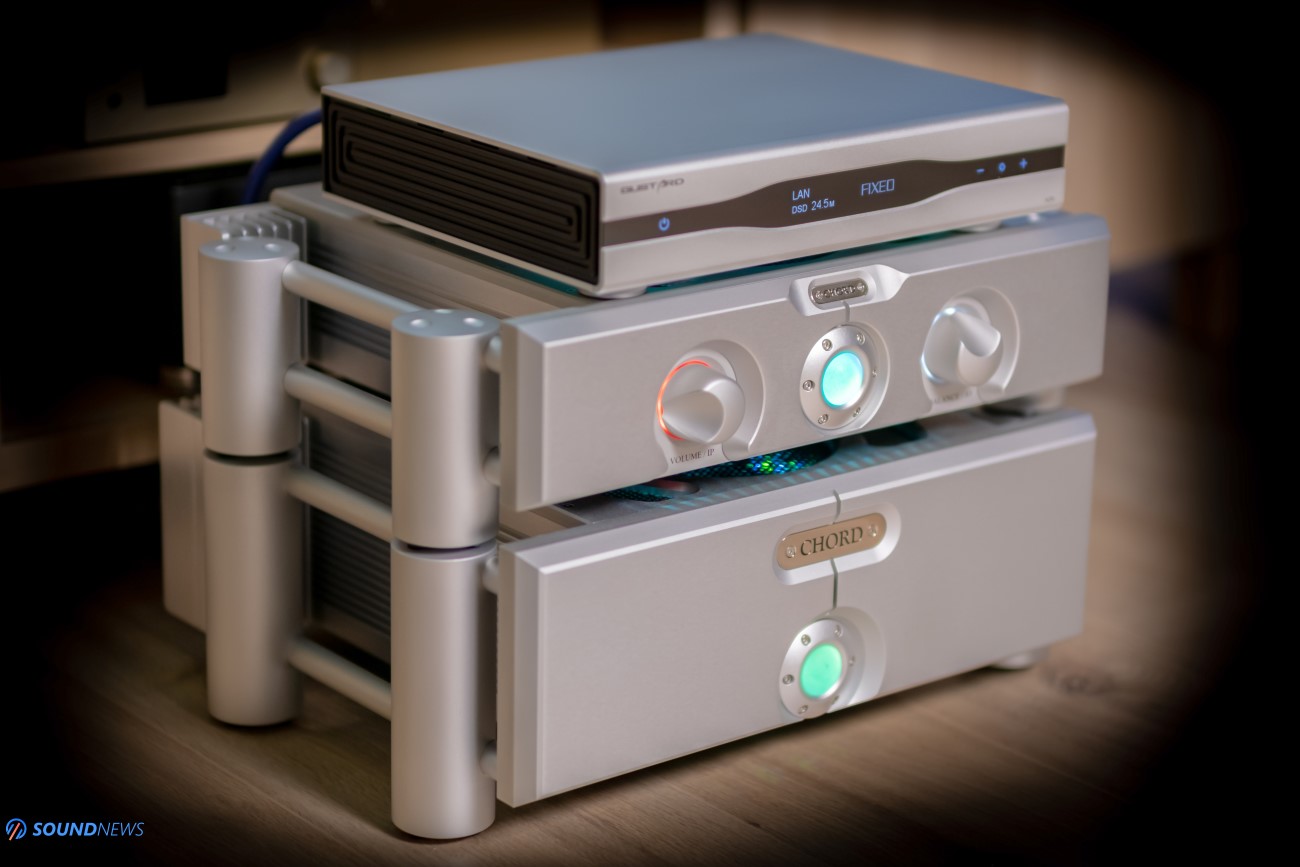
Test Equipment
As you are well aware by now, I’m testing D/A converters in both headphone and stereo setups, so I can have a better feel about their performance. I use two headphone setups, one in my office and another one in the bedroom - playing tunes before bedtime. I’m testing new stuff mostly in the living room as no matter how good my headphones are, the stereo image, depth and sound staging capabilities are much easier to assess in a well-thought stereo setup.
- In my main headphone setup, A26 was connected to a Trafomatic Primavera or Enleum AMP-23R - which I consider to be the absolute best tube and solid-state headphone amplifiers, driving all sorts of headphones, but mostly high-end ones. Hifiman Susvara was used the most part, followed by Meze Elite, Kennerton Rognir and Sennheiser HD800S.
- In a loudspeaker setup, it worked as a Streamer and DAC, followed by a Chord Ultima 3 preamp and by a Chord Ultima 5 power amp. In the latest stages of this review I checked all its digital inputs, connected to a PC, to my TV or to a Music Server and I also used it as a DAC and Preamp combo, just in case you’ll be using it this way in tandem with a power amplifier. I used Musician Knight 1 stand-mounted speakers on several occasions, but my KEF Reference 3 stand floors were used a lot more as I find them more resolving and holographic sounding by a good deal. Everything worked in balanced mode for a lower channel cross-talk and for a higher dynamic range.
All right everybody, this is pretty much it, so let’s hit some eardrums!
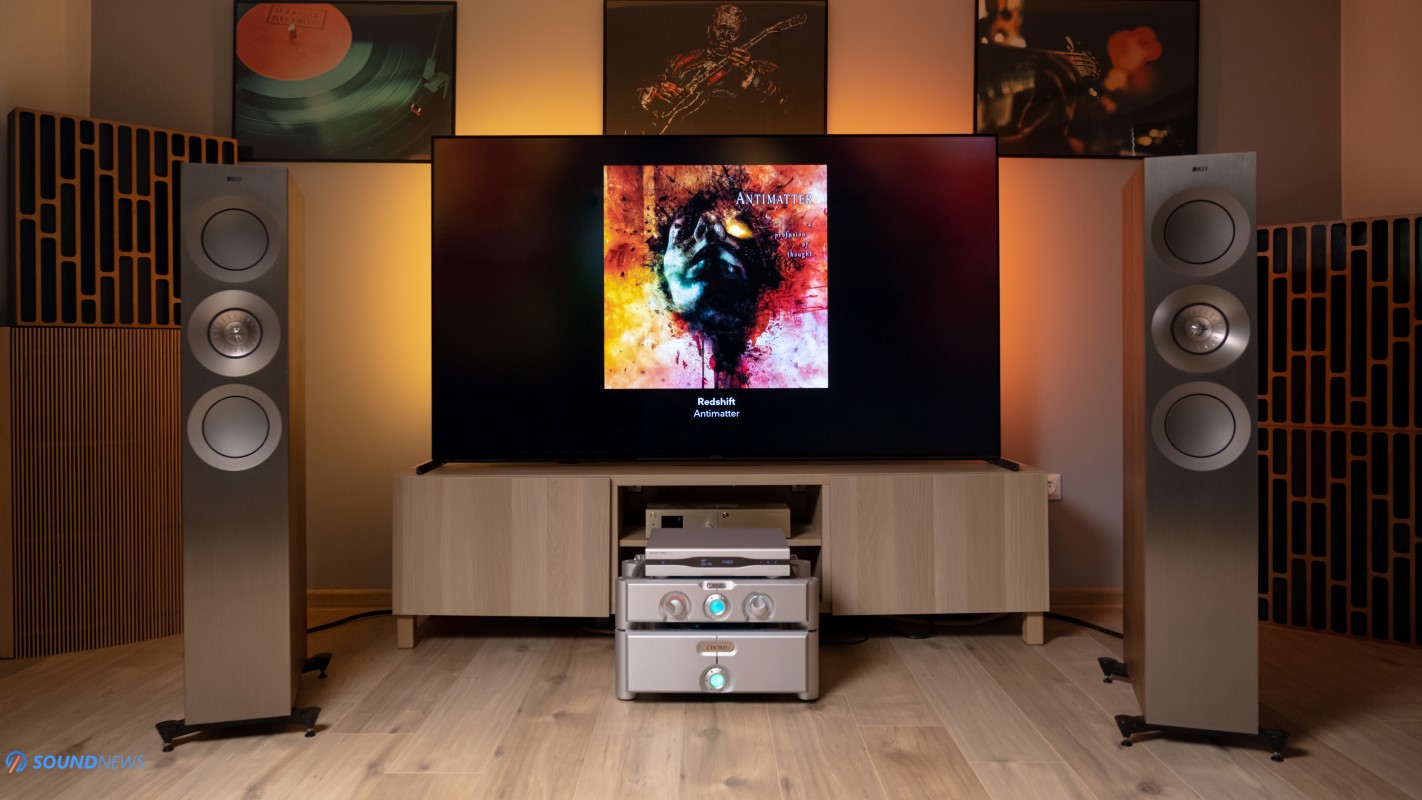
Sound Performance
I. Preliminary Sound impressions
Fresh power tubes and NOS driver tubes for my Trafomatic Primavera arrived a few days ago and as you can imagine, headphone listening came first but don’t you worry, it was used in an equally impressive stereo setup, getting a complete picture about its performance.
If you followed my X26 PRO and R26 Discrete reviews, then you already know that both won me over, getting a legendary status in my rankings, as truthfully, these will be hard to beat at their respective price points. Unsurprisingly, A26 joined forces sitting somewhere in the middle tonality-wise, combining some of that delta-sigma cleanness & sharp contours with the naturalness & massive soundscape of resistor ladder DACs.
I tried a myriad of delta-sigma D/A converters by now, but this is the absolute first unit that uses brand-new AK4499EX silicon that rocks newly developed switched resistor technology, working together with a multi-bit modulator, mimicking the sound of resistor ladder DACs as much as possible, without making the errors of such designs. A detailed comparison between A26 and R26 will follow shortly, but until that happens, I will mention that these are more alike than different in so many ways.
The newest Gustard unit relies not only on an immaculate technical performance that will impress the measurement crowd but also on its ability to awaken emotions while listening to music. While technicalities are extremely important to me, hence getting a few chapters dedicated to them, I can’t write a single word if the music isn’t speaking directly with my soul. I’m listening to music so I could calm my spirits in the evenings and poor gasoline in the mornings. I like when such units are driving me forward, making me feel good, sad, or on top of the mountain. You are reading these words because you’re also searching for that perfect balance between technical and musical-sounding and I do believe Gustard finally struck a perfect balance. I said similar words about R26, but that one was embracing the emotional part of music listening a lot more, always pouring milk and honey, making my tunes a little sweeter and easier to listen to.
Before going deep into the rabbit hole, let’s once again remember what a DAC needs to do in the first place. A DAC is a mini computer that receives a digital signal and outputs an analog one that will be amplified later on. A DAC crunches math and there’s no ambiguity in its job. It needs to be flawless, without inducing any errors in the chain. The problem is that the whole unbridled, honest, and non-sugar-coated truth is oftentimes hard to accept. Usually, people want nice stories and high doses of dopamine injected into their bloodstream. A good DAC should be the bearer of truth, although it could be a pain where the sun doesn’t shine and the truth is unbearable a lot of times.
After listening to hundreds of DACs, I slowly accepted the fact that I can always count on units that won’t fool around, that don’t have a sense of humor, being serious, no pain no gain the whole bloody time. I value honest, non-forgiving DACs that are putting everything on a plate. If you look around, everything high-end or top-of-the-line is non-forgiving, be it an American Quarter horse or a 16-cylinder Bugatti Veyron. I tuned my whole rig around the Chord DAVE DAC because in the right conditions, it can go to eleven. While I can tune its tonality back and forth with cables and additional electronics, there is no way I could tune its realism and lifelike lucidity. If a DAC can take me there, I think it’s a force to be reckoned with, deserving your fullest attention.
With A26, Gustard doesn’t want to reinvent the wheel or hope for a top spot in my rankings. However, in the right conditions, especially via its internal streamer, it was only by a notch behind the DAVE while costing a tenth of its price, and that my friends is an unbeatable price-to-performance ratio.
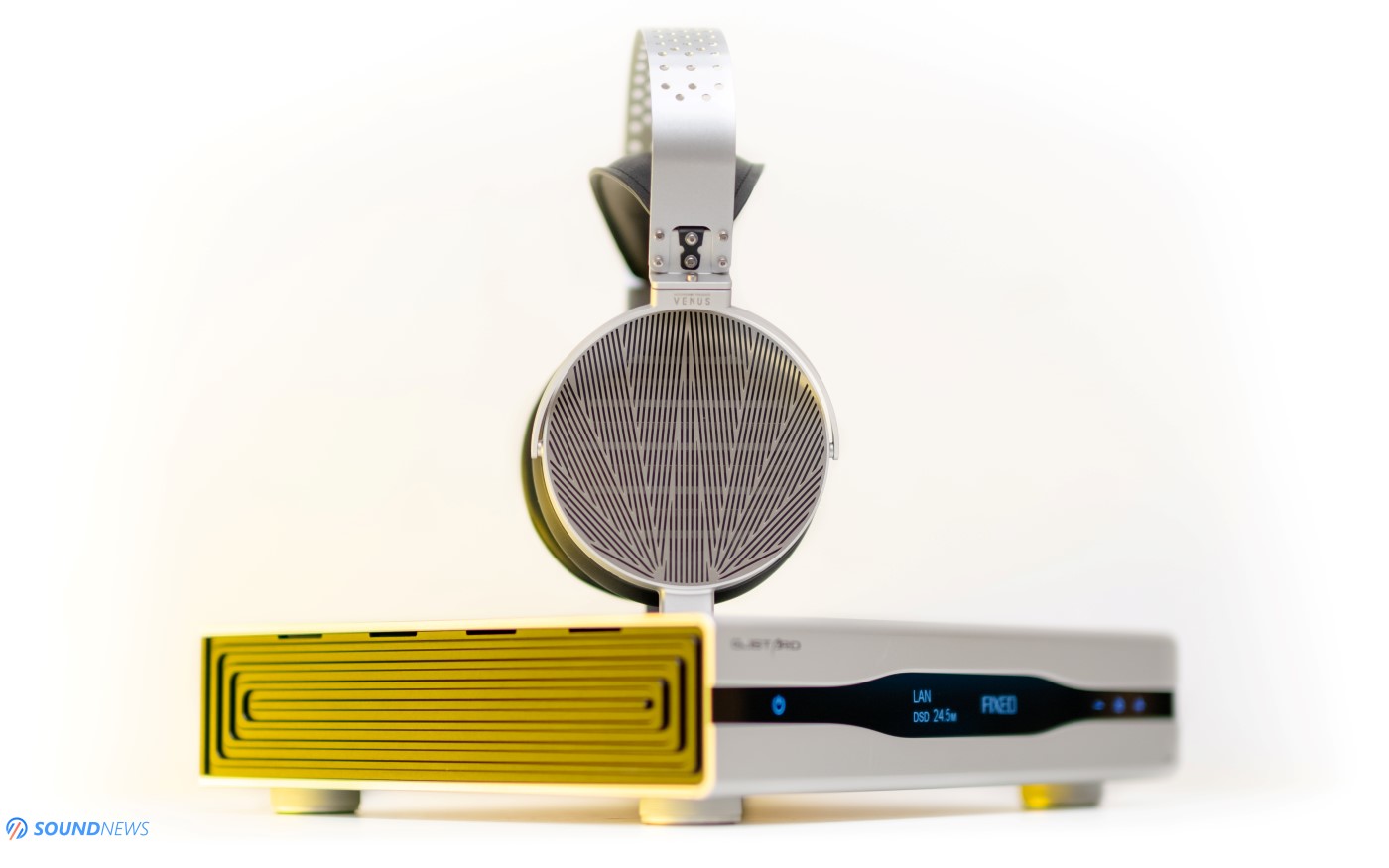
II. Transient Response
I was mighty impressed by R26 and by its ability to be fast and hard-slamming the whole bloody time. While this might sound like an easy task, most resistor ladder DACs weren’t like this, getting mellow and slow sounding for the most part. If I’m taking chip-based converters into this discussion, then it was the other way around, always sounding fast and furious, but not as punchy as I was hoping for. Only much heavier, bigger and costlier units could deliver the full might of the thunder god. As a general rule of thumb, you are getting a softer sound with resistor ladder DACs and a speedier one with chip-based converters. If you wanted to have them both, then you needed to eat more bread and less pudding & cook your own meals for a few blood moons. Nonetheless, Gustard shattered my preconceptions with R26, which I’m still using on a daily basis.
Now imagine that A26 can do some things better and other things not so much. Combining a mid-forward sound with a clearer image, the sound felt stronger and somewhat weightier, carrying more music with every single strike. I remember raising my eyebrows when listening to tribal tunes of Symbolico and progressive rock of Sonar, getting warmth and fullness to excess, lifting remaining traces of veil, while putting the bass notes on a whip. Sounds weren’t traveling long distances as A26 felt more intimate, delivering higher energy when hitting my eardrums at the cost of a less impressive layering. In this regard, A26 was very impressive, getting clear and defined bass notes that were playful and quite fun at the same time.
Connected to a Trafomatic Primavera or Enleum AMP-23R whilst driving a pair of Hifiman Susvara, I felt massive shifts in dynamics happening in between my earlobes, getting a punchier and a livelier sound, as if describing a bass-heavy set of headphones. Symbolico’s Perceiving All (Qobuz / Tidal) is a masterfully crafted album for the 21st-century audiophile, pushing dynamics higher and making me curious about the sound placements happening all around while providing lightning-fast decays of the notes. Gustard A26 together with Enleum’s AMP-23R and Hifiman’s Susvara were firing machine-gun bass notes, sending my earlobes into a non-stop flip-flap fiesta. With R26, I could catch my breath and relax my mind in between passages, but with A26 it felt like an act of self-punishment, constantly bombarding my hearing apparatuses with energy-filled sounds that were coming from everywhere. A26 was smaller sounding and you can feel that music emanated from a nearer inception point versus the R26, ultimately getting a faster decay and better control of the drivers. With all that said, the transient response guy won’t be side-grading his R26 with an A26, as the former still has plenty of life in it, hiding a few aces under its sleeve which will be revealed later into the game.
At the 5-minute and 55-second mark on Gojira – The Art of Dying (Qobuz / Tidal) which is not for the faint-hearted, please move to the next chapter if avant-garde-metal is not your thing. Listening to the final stretches of this track, weird thoughts tingled my mind. With R26 Discrete the sound was both grotesque and beautiful, I felt some raw energy coming forward, but not all of it, as I moved from a two-geared planar-magnetic driver (magnet > metallic diaphragm) to a three-geared dynamic driver (magnet > voice coil > diaphragm) that lost some traction and horsepower. The sound didn’t want to offend me via R26, showing mostly the beautiful side of this track, while A26 was showing its true, unspoiled nature. Subsequently, I can easier enjoy the R26 with solid-state electronics regardless of their quality, even with less-than-perfect ones that leaned towards brightness. A26 won’t mate well with all and everything as a few solid-state amplifiers could still be problematic.

III. Soundstage & Depth
Soundstage wise A26 is impressive, it’s really good and it’s better compared to smaller and more affordable units. There isn’t even a contest between A26 and something like a Topping D90SE, SMSL VMV D2, SMSL SU-10, or EverSolo DAC-Z8, as A26 is simply wider, taller, and deeper sounding than any of the aforementioned units. Via A26, there’s a sense that music is expanding its influence with loudspeakers, taking more room space when jumping from regular tunes to live recordings. Affordable delta-sigma DACs would portray a two-dimensional or pseudo-3D picture with little to no depth and layering, while A26 feels like a different beast altogether, opening the windows towards music and getting so much more air in between it. Even with high-end open-back headphones, the difference is easily perceptible. Hifiman Susvara are rarely big sounding and more like inside your head with the wrong DAC and amplifier, but put them on world-class electronics and they will take off, showing their true inner beauty. A26 is an excellent machine when pointing out the location of the notes and honestly, it’s even better than R26, getting clearer and sharper sounding along the way. A26 draws your attention more often, something that R26 will rarely do when multitasking in front of a computer. A26 has this ability to show off, always trying to impress with its immaculate technicalities. When listening to live recordings, you can easily hear things happening deep in the background. It could be foot movements, musicians inhaling and exhaling air, or fingers touching the fretboards or piano keys. With all that being said, the music never felt limitless as was the case with R26.
The time has come, R26 just took its most valuable ace and threw it on the table. Via R26, the sound has no boundaries, coming from a black void of nothingness, appearing out of thin air and flying a longer distance until reaching its final destination. While R26 isn’t that sharp or precise in its stereo image, it is considerably deeper and wider sounding. As I mentioned before, A26 is both impressive and excellent, two specific words I chose to describe its sound staging capabilities, but it is not as legendary as R26 performs with acoustic or live music. I’m always getting chills when R26 starts playing, getting bigger void spaces in between the notes, bringing along more music without bumping the notes into each other. A26 wasn’t as impressive in this regard, getting a sound closer to your face, pushing things a little closer, altering the depth and the perception of a borderless sound.
Mu Ahkku by Mari Boine (Qobuz / Tidal) is an excellent track when testing the scale and depth of the music. It transmits the sorrow elements quite well, but I was impressed mostly by the interplay of musical instruments cleverly placed all around. Staying focused with my eyes closed, I felt a precise distance between them and my listening spot. When recording this album, people were scattered across the room and you can feel a longer echo murmuring in the background, including a faint brush stick touching the cymbals on several occasions. With A26, everything felt precise, sharp and correct, yet it wasn’t as magical as it was via R26 – which added longer trails and placed additional bubbles of air in between them.
In the end, A26 felt like a better unit when pointing out the location of every instrument, while pushing the sounds somewhat closer versus the R26. I love them both for what they are and if you already own any of these, it will be foolish to side-grading to the second unit, unless you need a second DAC.
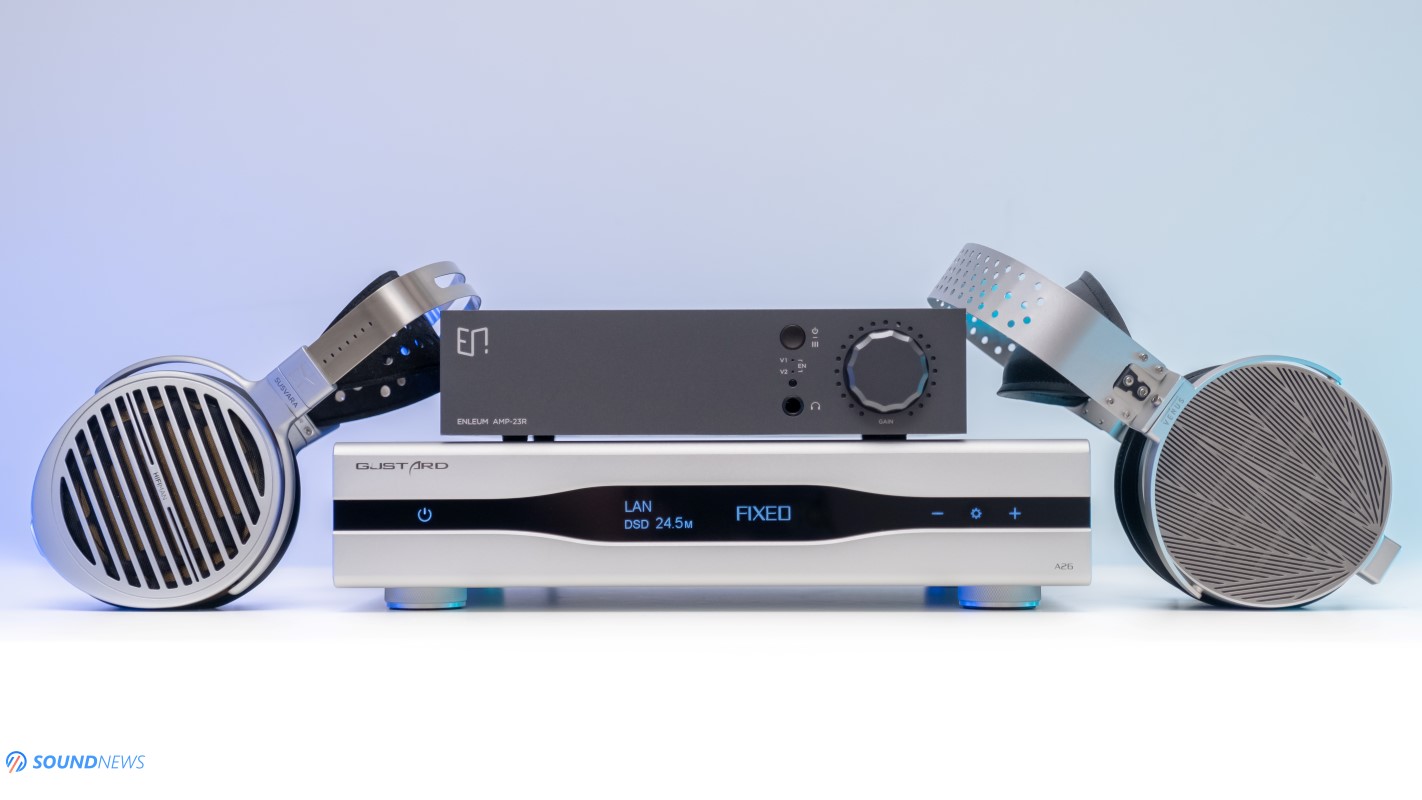
IV. Resolution & Transparency
People tend to believe that resolution and transparency are more or less the same things, but for me, these are different concepts. Nowadays you can easily get resolving sounding units without spending a fortune, but only a small portion of such units will sound transparent. Take pocked-sized state-of-the-art measuring DACs of Topping, SMSL, and even of Gustard like X16, which will reveal the last bits of information way too easily. For highly resolving and distortionless sounding units you no longer need to pay five figures, as even between ~$200 and $500 there are plenty of options to choose from that will show all and everything, including imperfections and mastering errors. On the flip side, most of these were flat and 2D sounding. I couldn’t zoom in and untangle music with a Gustard X16, it was an unsolvable quest with affordable Topping & SMSL devices, appeasing Flat-Earthers, but not as much experienced audiophiles. When closing your eyes, music needs to fill in your listening space, it needs to breathe without staying in your way. It needs to be scattered, explored, and then admired from a different perspective and I do believe that only transparent-sounding DACs can do that.
In my experience, D/A converters with powerful analog output stages and overkill power supplies could stretch my music wider, so I could look deeper into the mix. After inspecting A26’s PCB closer, I couldn’t find budget restraints. Gustard went overboard at every step of the way, starting with the power supply, digital and analog sections. I couldn’t find bottlenecks that usually choke affordable D/A converters, getting a see-through transparency and world-class detail retrieval.
I like to have two high-performance DACs at my side, one used in my stereo and another at my head-fi battle station. I’m aiming for distinct-sounding units that would give me different flavors. Since Chord DAVE is playing music without colorations and it’s so far, my no.1 DAC at showing me what the heck is happening behind my tunes, I want a second unit to be different, adding color, life, and fun and there’s where R26 Discrete makes its stage dive with horns high. After going back and forth between the latest Gustard units, A26 seems much closer to DAVE as opposed to R26, always getting a highly detailed, yet…organic sound that people are usually chasing. It seems that A26 is more balanced sounding from Gustard’s portfolio, sitting in between X26 PRO and R26 Discrete.
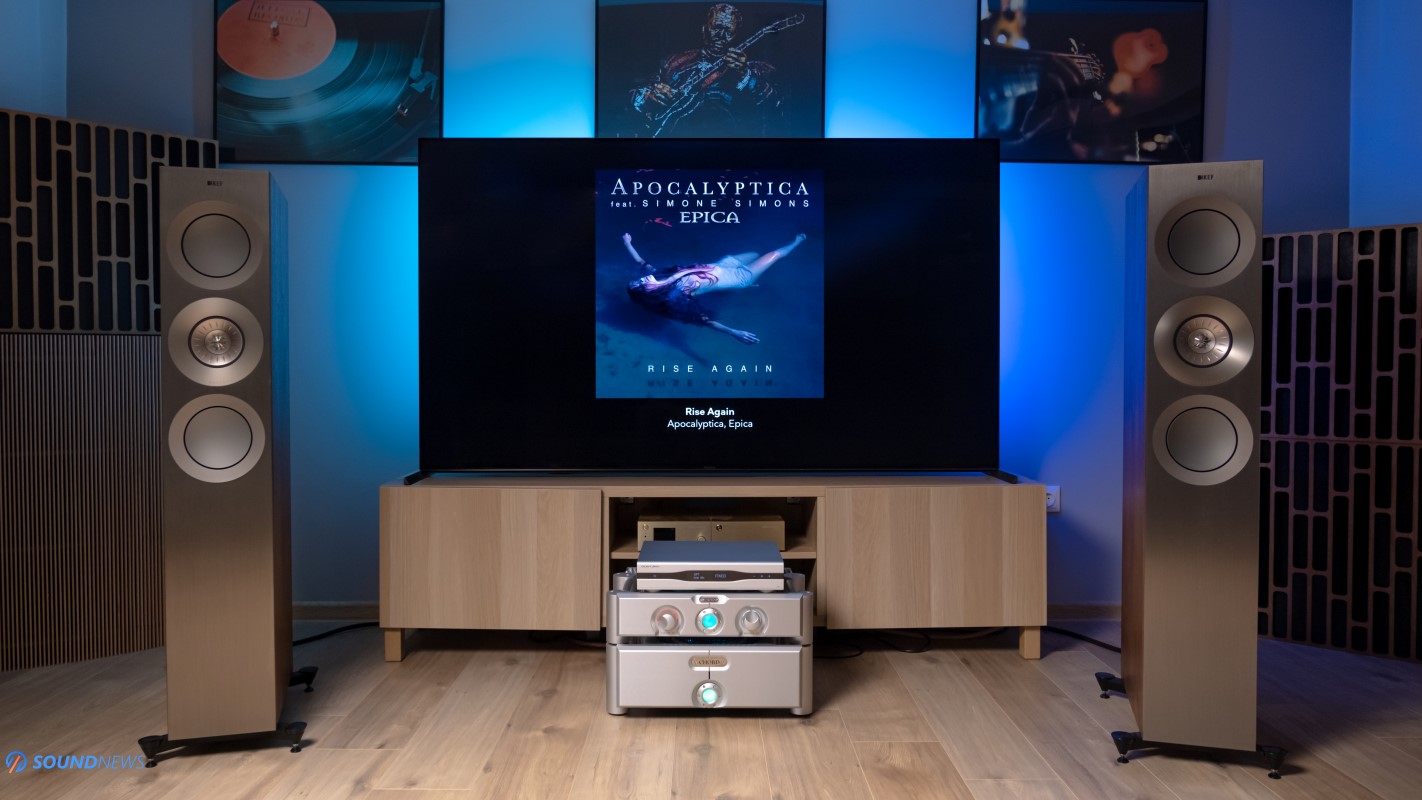
V. Gustard A26 in a Stereo setup
Alrighty, I’ll confess: I’m a power amplifier guy. I have nothing against integrated amplifiers, I tried plenty of great-sounding integrated amps. The last ones that impressed me deeply were Trafomatic EOS and Enleum AMP-23R, but I always liked the idea of going with separates that won’t compromise anything every step of the way.
The problem with my setup is that before using that awesome-sounding Chord Ultima 5 power amp, I needed a dedicated preamp, I needed a DAC, and a wireless streamer that would feed it, hence adding a Chord Ultima 3 Preamp, a Chord DAVE and a Zidoo NEO Alpha wireless streamer. With Gustard’s A26, I’m killing three birds with a single stone as it already has a wired streamer, a high-performance DAC, and an adequate preamplifier section. I started using Roon last year, I added a Roon Nucleus working as a Roon Core, transforming the A26 into a plug-and-play wired streamer and DAC, controlling it via the Roon app installed on my smartphone.
I like the idea of enabling or disabling A26’s volume attenuator, if you have an integrated amplifier or a dedicated preamp, you can bypass its attenuator without limiting the dynamic range. I tried it as a streamer, DAC, and preamp, controlling volume with its bundled remote control. For starters, A26 doesn’t have a true line-amplifier circuit inside. Its voltage output isn’t amplified, but attenuated from its full 5V output, working more as a passive preamplifier. When it replaced three boxes, it performed well and above my expectations…but something was holding back dynamics as it didn’t sound as alive and impactful as I knew it in my head-fi setup. After adding the Ultima 3 Pre back into the chain, the joy of listening to music came back home, it became punchier sounding, and my speakers felt tighter and more controlled, while gently expanding the stereo image. If you want the absolute best it has to offer, then use it with integrated amplifiers or with dedicated preamplifiers, followed by a power amplifier (or two). A little birdie chirped that a headphone amplifier that doubles as an active preamplifier is in the works for more than a year that will be released in the following months, having similar case dimensions and color scheme with their holy trinity (X26 PRO, R26, and A26).
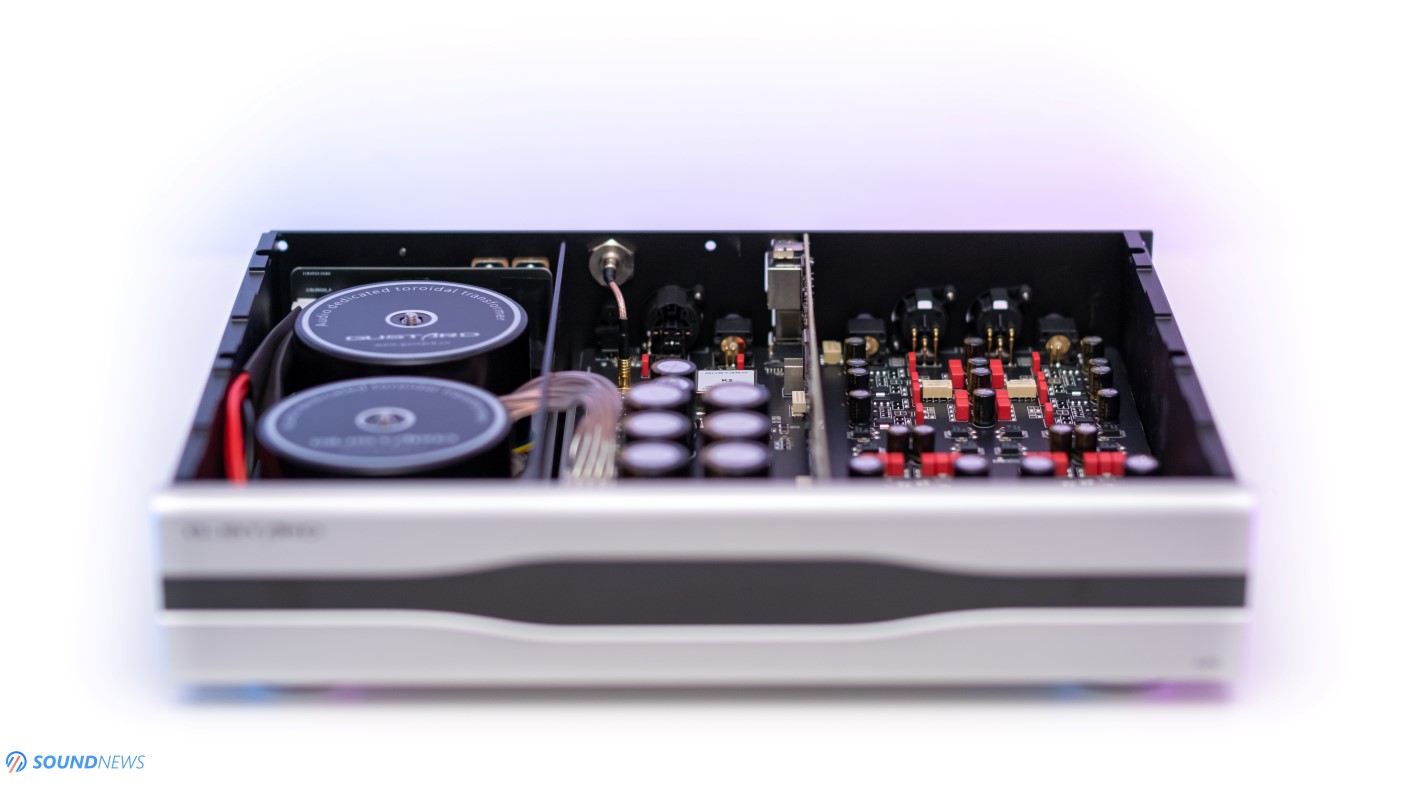
Frequency Response
VI. Bass
A26 is nothing short of spectacular when rendering the lowest octaves. There is definition, texture, depth, rumble, impact, and finesse, something that’s usually reserved for units at double its asking price. I’m describing a highly engaging unit that always goes to eleven with everything that has to do with the bass. I found it impressive with speedy tunes and it was equally impressive with mellow and relaxing music. In this regard, A26 outperformed my R26, as it was a hair punchier and more dynamic sounding. I went through several electronic albums which I know for a lifetime and regardless of the headphones being used, my earlobes were always dancing in the air. I heard Meze Elite, Kennerton Rognir, and Hifiman Susvara revitalized on many occasions before, but that happened with pricier DACs coming from the house of Rockna, Denafrips, or Chord Electronics. For a few seconds, I went louder compared to my usual listening levels, and yet the bass felt as controlled, clean, layered, and deep-reaching. If you love your bass and everything that has to do with it, then A26 will deliver you maximum engagement.
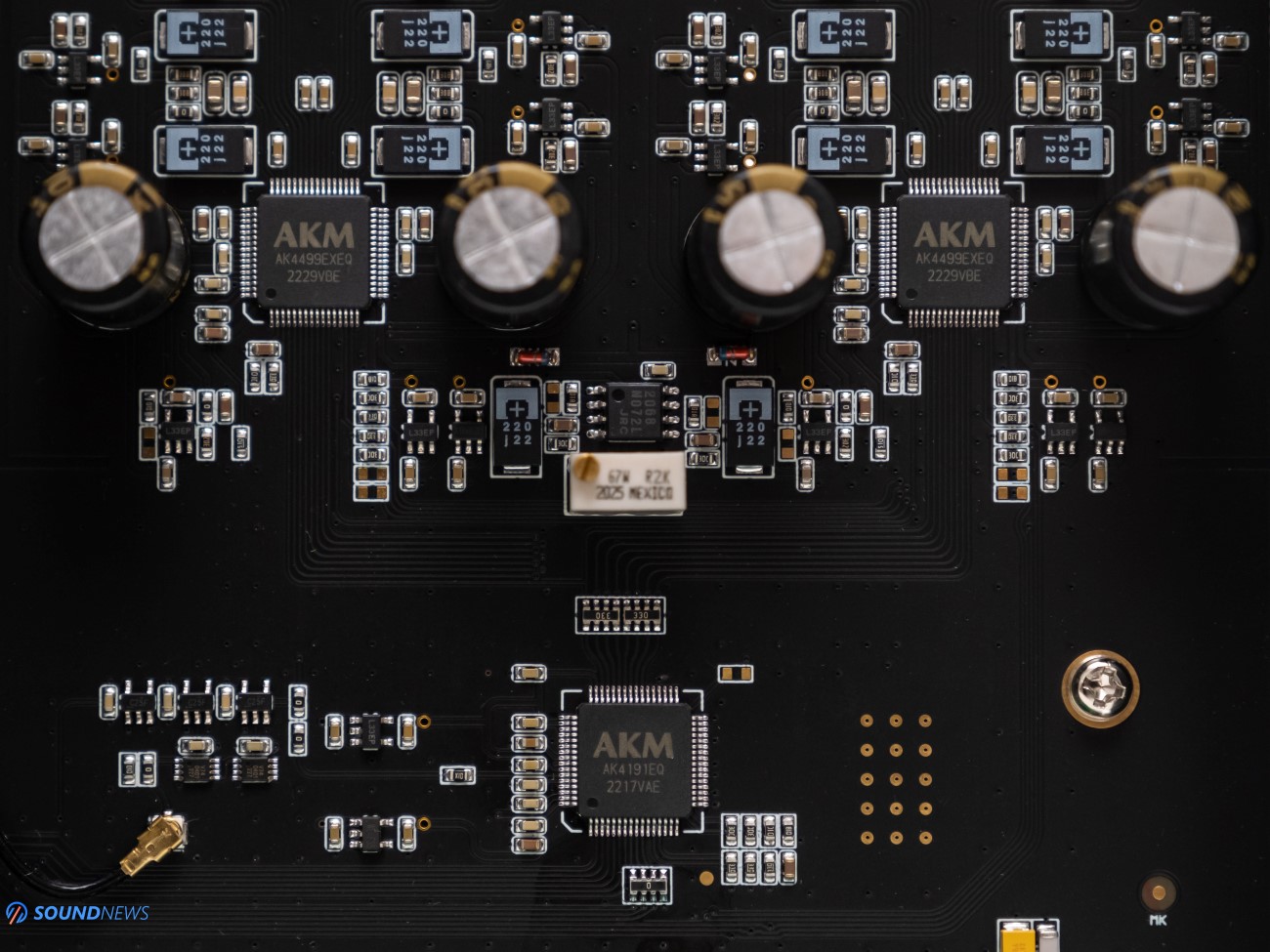
VII. Midrange
I’ll remind you once again that A26 is being powered by two AK4499EX flagship DAC chips of Asahi-Kasei Microdevices that use Velvet Sound tech, multi-bit modulators, and newly developed switched resistor technology. AKM’s goal was to make these chips as resolving as possible, while never interfering with the soul of the music. Many chip-based converters tried mimicking the sound of R-2R ladder DACs, but none of them approached so close to their velvet, smooth, and organic nature like Gustard’s A26 did for me. The magic started when acoustic music mixed with vocals started playing. You can almost feel it in your gut that everything sounds just right. The voices sounded as humanly possible, having longer decays and an irregular vibration. Snare drum hits had the thump and a short echo that I’m not usually getting with chip-based converters. There was more life, everything bloomed and intertwined nicely, without creating muddy waters. For me, the midrange is all about the vibration, emotion, about sending a signal, about making me feel something and if I’m not getting any of that, then it’s a dead-on-arrival unit. Getting clean and accurate bass is extremely difficult, especially maintaining the lowest octaves for a longer period. Nevertheless, getting the midrange right is as challenging and time-consuming. Gustard already has plenty of experience and it shows when listening to A26.
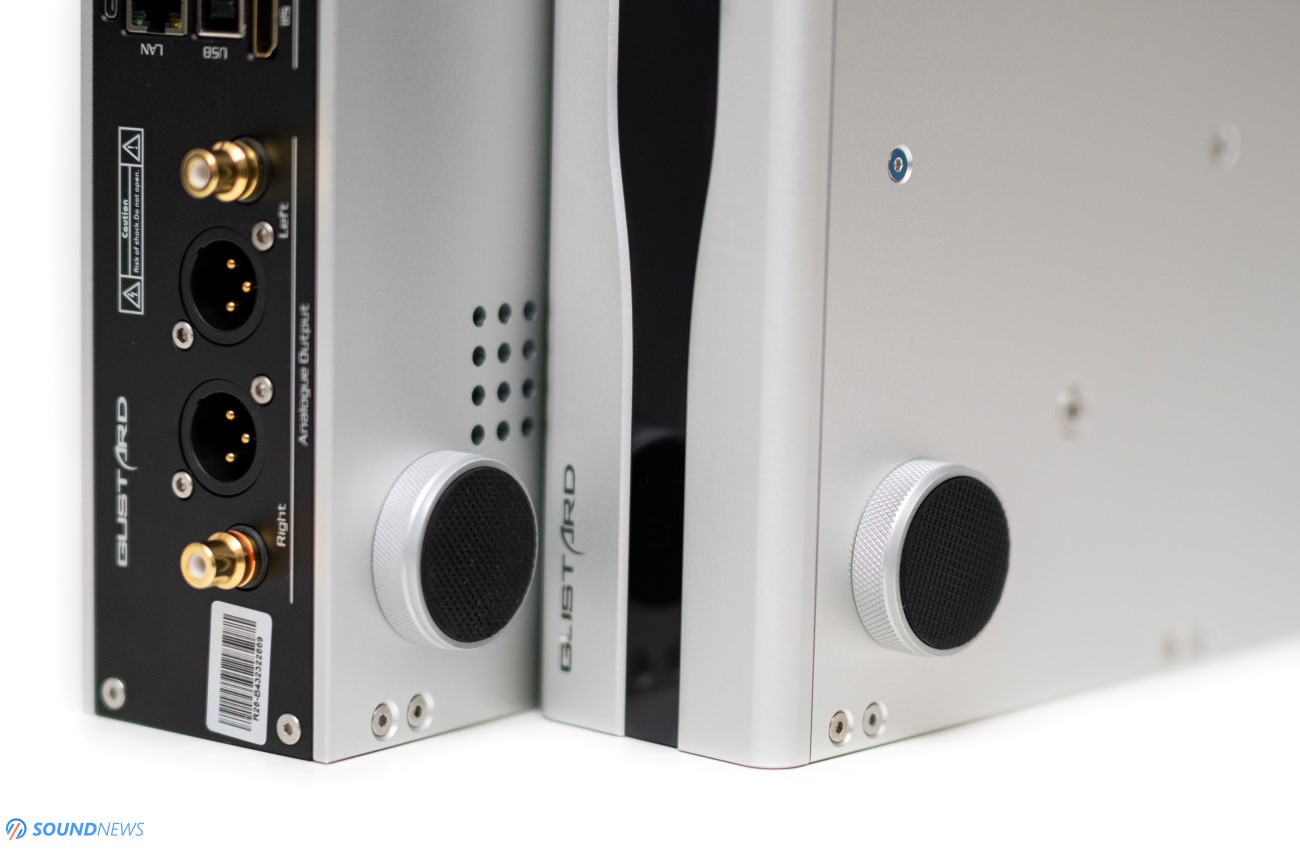
VIII. Treble
When I was comparing it back and forth with R26, the biggest difference was felt in the treble. R26 always juggles with the idea of providing as much joy and satisfaction to the listener. It tells you fresh jokes and beautiful lies, and it does that with a happy face, getting so sweet and pleasant in the process. R26 will never offend you in the treble, even put on bright-sounding amplifiers, speakers, or headphones. While it didn’t slash bits of information, always sounding extended by going past the top octave, it just removed over-sharpness and timing errors. It felt just right, sometimes gently rounding the top octave that removed listening fatigue for good. A26 is doing that as well but to a lower degree. X26 PRO was detailed and sharp sounding (on a few occasions), R26 was detailed without being sharp and A26 feels like a middle brother, getting some of that sharpness and naturalness along the way. With it, I feel that I’m no longer experiencing an R-2R ladder DAC. That warm and cuddly feeling is almost gone, getting a more serious sound, closer to a linearity curve.
In the end, A26 covered the frequency response in full, adding more energy in the bass and midrange while marginally lowering it in the treble.
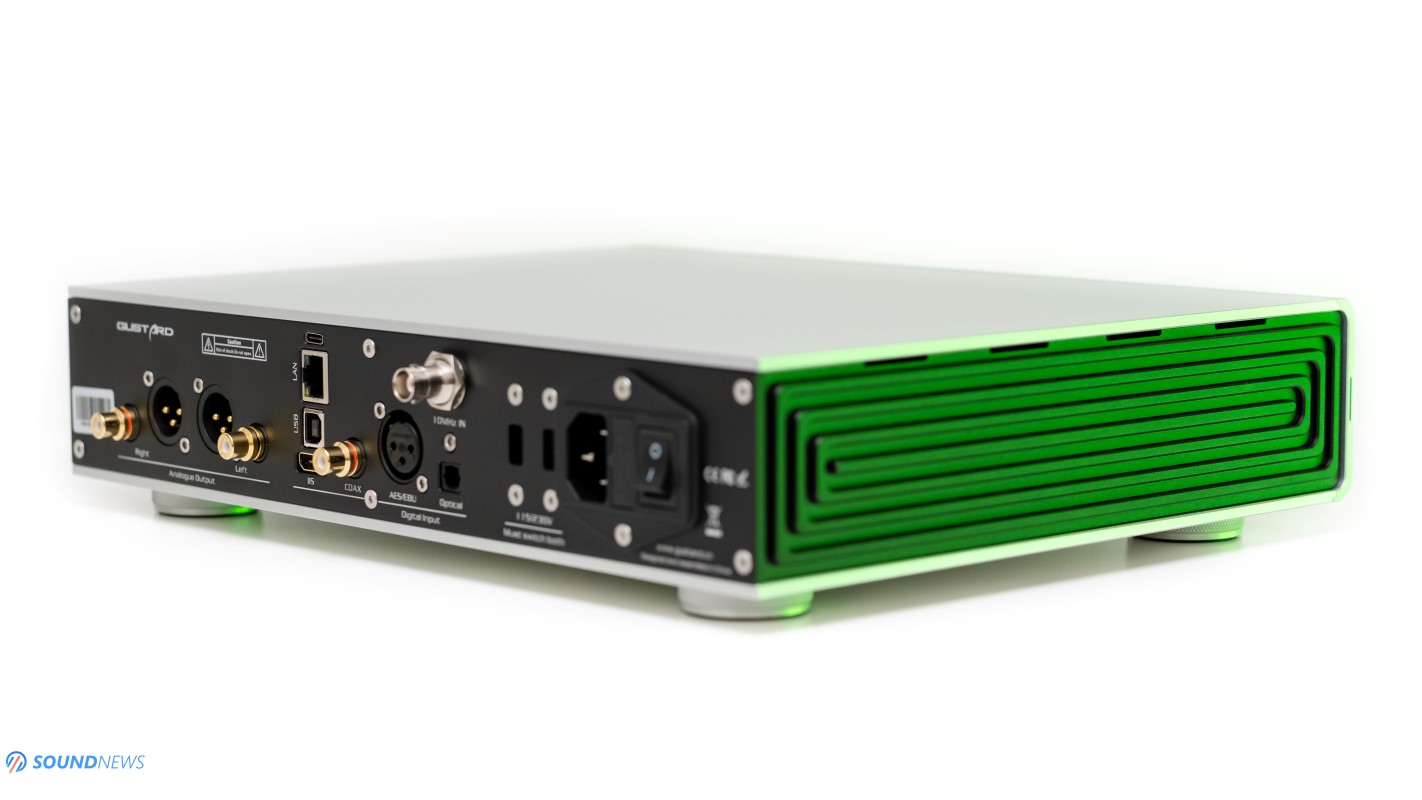
IX. Digital Inputs Showdown
This will be a short chapter as it’s a very simple one. If you want to squeeze maximum performance out of it, then you will need to use its internal streamer via Ethernet. I used it via Roon, as I didn’t need to install additional third-party apps, I didn’t need to configure anything in particular and this is what I used the most while writing this article. It works with UPnP protocols, with HQ Player NAA and I’m told that additional protocols will be added in the future.
The second input which sounded extremely close to Ethernet was I2S via HDMI, but for that, you will need a DDC (a digital-to-digital) converter that usually accepts a single input like USB, while offering multiple outputs including I2S. Such units usually have a higher quality master clock versus the one used by your digital transport (PC, Media Player, TV), re-clocking the signal along the way and getting a higher performance out of your DAC. This will give you close to maximum performance, but still, Ethernet was edging the I2S, sounding by a hair more resolving. Not all DDCs are made the same, some can cost as much as the A26 itself. In my case, the best sounding was a Denafrips Gaia and in the second place, a Matrix X-SPDIF3 was trading blows with a Singxer SU-6 – as I found them equally impressive. Gustard has their own DDC called U18 and I’m sure it will sound marvelous with A26.
USB input comes next, it is also one of the most feature-packed digital input, accepting PCM and native DSD material, including MQA content. With or without dedicated drivers, it worked flawlessly with a Windows machine, I didn’t get stutters or any other issues. The only “issue” I had with USB input is that I2S and Ethernet sounded clearer and more dynamic. With USB, A26 was gently pressing the brakes, while a thin veil was covering my tunes.
The least impressive sounding inputs were Optical and Coaxial, I found them boring sounding at all times, transforming it from 3D to 2.5D sounding. The resolution took another hit and it seems that both inputs won’t accept MQA, native DSD, or 32-bit PCM material. Yikes!
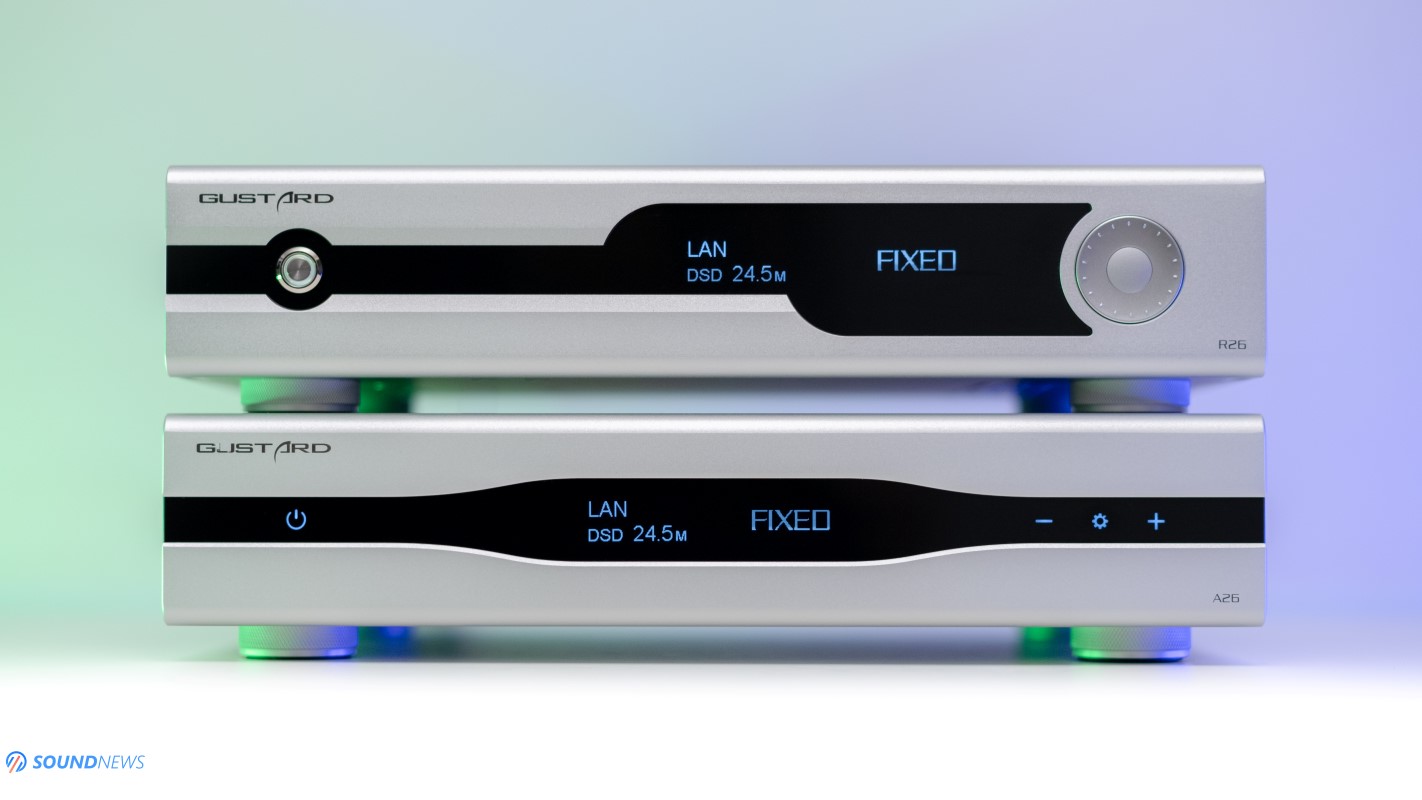
X. Battle Of The Gustards (Part II)
If you are curious about the X26 PRO put against the R26 Discrete, then please head over to my R26 review and at chapter X you will find your answers, but today I will compare the latest & hottest Gustard DACs. You have been asking about this comparison for a while now, spamming me over email and social media, but you can recline your chair now as a proper comparison will follow shortly, so let’s dive in!
Gustard A26 ($1500) VS Gustard R26 Discrete ($1650)
I will skip their specs and looks, focusing on their feature set and sound performance. Both units have been tested in headphone and stereo setups, I used the same power cables and interconnects. I didn’t need to re-adjust their voltage output, as both are providing 5V volts at full power.
While these are quite different sounding, it would be a horrible idea to swap one with the other. These are honestly more alike than different, their tonality is similar, yet different at the same time. I’ll break it down into smaller sections, so you can better understand their performance.
- While both are highly resolving and equally transparent sounding, A26 will be giving you a little bit more. Mu Ahkku by Mari Boine (Qobuz / Tidal) is an exceptionally mastered track. With about half of the D/A converters tested around here, I couldn’t hear the brush stick defined at the 00:29 mark, sometimes it was fuzzy, sometimes it was muted, and sometimes it wasn’t there. Luckily, both A26 and R26 are proving that crucial information, but A26 felt sharper sounding and slightly more defined, as the contours of the notes were outlined via A26. The latter has a higher dynamic range and with the right equipment and selection of music, you can hear that.
- Both are speedy and impactful sounding, but the music feels more elastic on R26 when coming from a crowded to a live recording. Sometimes it feels deeper sounding with R26, there is a longer travel until the sounds are reaching my body and this gives an impression that A26 is marginally faster sounding. They both pound and slam with a higher force than any SMSL or Topping-made units, even compared to a few pricier DACs, but since A26 is more immediate and closer sounding, the sound feels punchier by a little. The difference is quite small, but it’s detectable.
- By far, the biggest difference lies in the soundstage department. Regardless of what I was listening to, A26 had a sharper stereo image, placing the notes precisely around me. R26 appeared fuzzier and not as sharp and accurate. However, when trying to expand or close in the sound going from live to regular tunes, A26 didn’t feel as impressive, especially with live and reference recordings which were hitting an imaginary wall at some point. There was a sense of grandeur and depth that A26 couldn’t apprehend even on world-class electronics. In this regard, R26 felt closer to what I have heard on Denafrips Terminator Plus and higher priced Rockna converters, easily expanding and shrinking the sound depending on the music.
- The inception points of the musical notes were also quite different on both units. With R26, I couldn’t tell from where the sound was emanating, music was just popping out of thin air. I had a longer time frame to appreciate their vibration and their beauty, leaving a long trail of sounds along the way. A26 wasn’t leaving a trail that I could follow, sounding closer to my face and never trying to show my music from a different perspective. In this regard, I could swear that I’m listening to a chip-based converter via A26, as all of them had these traits. R26 was putting more space in between the notes and I could easier zoom in on the tiniest sounds playing in the background. A26 pushed things on the foreground and while it felt more resolving, it was more difficult wandering around my tunes, especially via open-back headphones.
- The final difference was felt in the frequency response. Imagine looking at a beautiful photo made by a renowned artist on a high-end film camera and then comparing it with a sharp high-resolution digital photo. This is what I felt when comparing both units. A26 felt sharper sounding, with notes popping in and out faster. With all that being said, R26 was always beautiful sounding and quite magical as well. It can work better with bright recordings & electronics. A26 will spread its wings with neutral or warm-sounding upstream equipment, while R26 can work with all and everything. The colors were more vibrant on R26, getting a more relaxed treble delivery along the way, something that A26 was doing to a lesser degree. I still find A26 quite velvety sounding especially when put against smaller devices, but there wasn’t as much refinement as it was via R26.
In the end, I find them comparable, yet different sounding, and depending on your taste you might prefer one or the other and that’s perfectly fine. I’m surprised that Gustard lowered the price to be in line with X26 PRO, but still kept the Streamer and Ethernet port of the pricier R26 Discrete. Regardless of what unit you will be choosing, you will be getting a top-notch D/A converter that’s comparable or better versus pricier units.
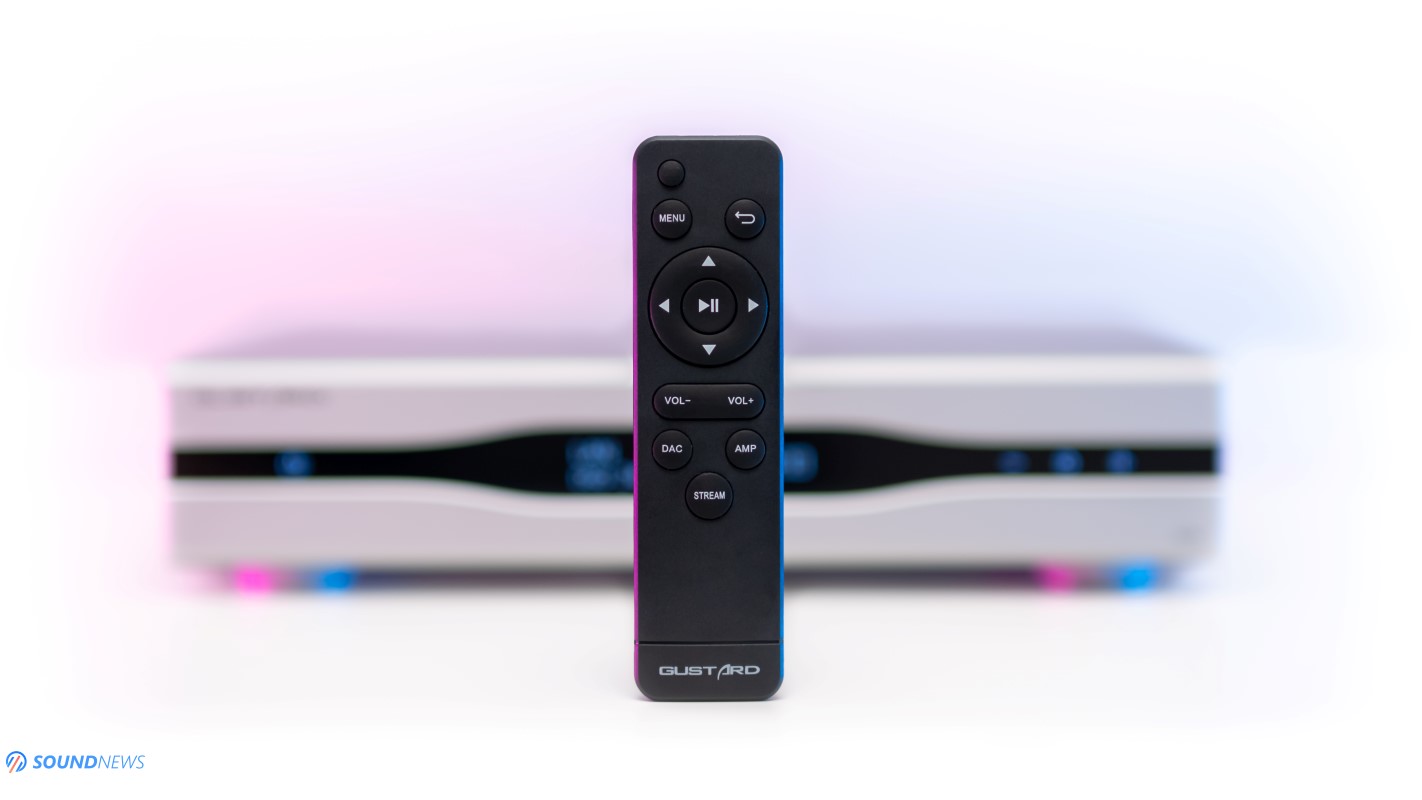
My Conclusions
Gustard impressed the hell out of me with their R26, so much so that I went ahead and purchased a silver surfer to be used in my headphone setup. While R26 is still a true bargain and I won’t part ways with it anytime soon, A26 is the true value king, the giant killer that will be remembered for a very long time. Gustard included the most important feature that made R26 desirable while slashing A26’s price by $150 and that’s something you’ll rarely see in HiFi.
I’m rarely testing units that have little to no drawbacks, and I’m sorry but except for that plasticky remote control, I cannot complain about its look, build quality, and more importantly its sound. You won’t get a simpler case and while R26 was already beautifully crafted, A26 felt like a more refined version, exchanging mechanical buttons with touch controls which made it cool.
Tonality-wise, this is quite probably the best chip-based D/A converter I have tested so far, getting a perfect dose of technicalities, while bringing life back into your music. A26 was always refined and velvety, preserving the soul of the music as no other chip-based converter did to this day. There’s an abundance of energy every time I hit that play button, getting positive vibes along the way.
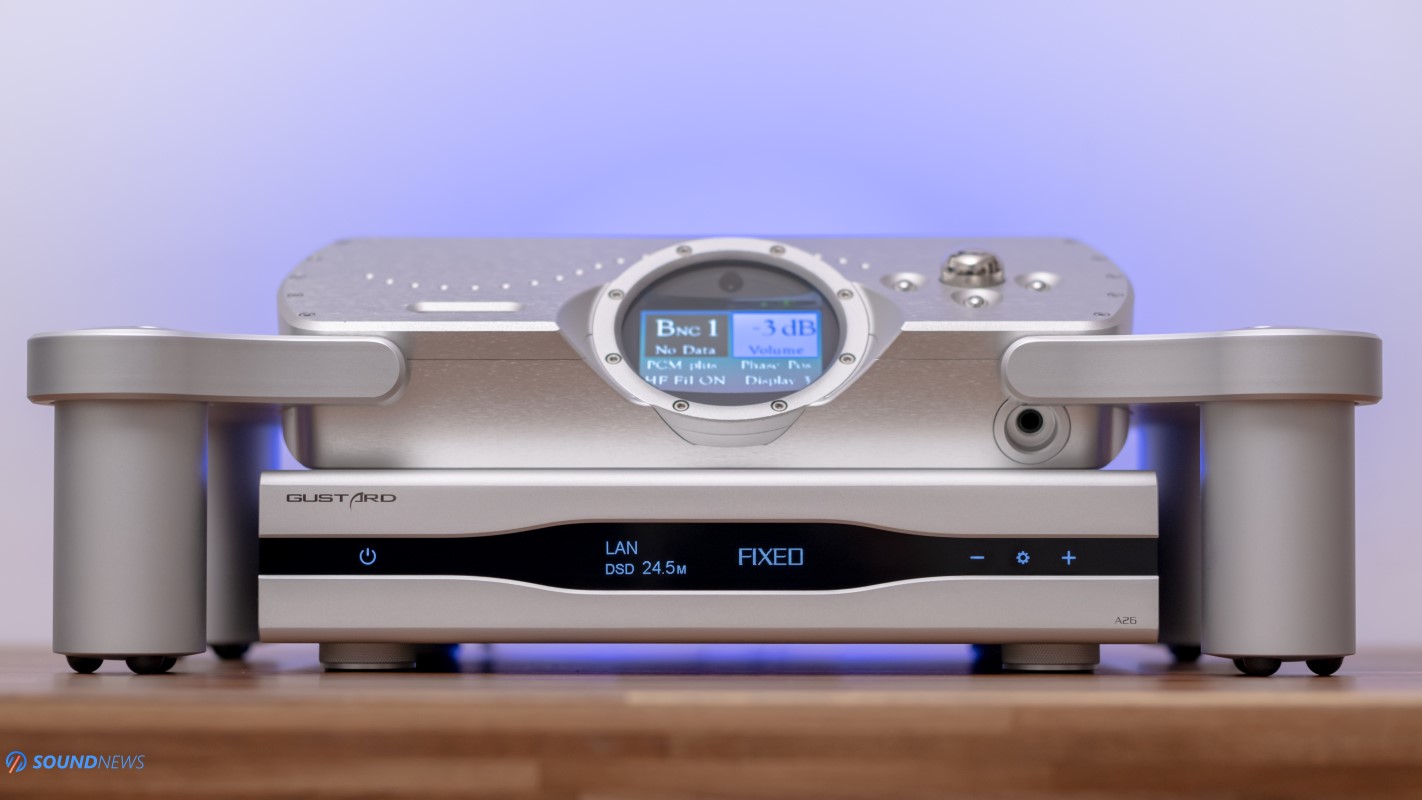
It does some things differently compared to R26 and that’s why you’ll need to decide for yourself whichever better suits your needs. Considering that I already have a super honest and highly resolving sounding unit, I’ll probably stick to my Chord DAVE for a while now, but if I didn’t have it already, then I would be rocking an R26 and an A26 in no time!
I tried, but I couldn’t nitpick that much about it. This is an almost flawless-sounding unit that is too cheap to be taken seriously. I know people that aren’t even looking at units costing less than $5K, but their loss is our gain as this hobby is not about spending all our savings, or about pleasing audiophile friends or online communities. This hobby is about your journey and about finding a perfect balance and I strongly believe that A26 is such a unit. The only thing I truly desire is a metallic remote control purchased as an extra accessory and of course, I’m patiently waiting for their dedicated preamp and headphone amplifier that should be released in the following months. H20 PRO or H26 should be a fitting name, don’t you agree?

It goes without saying that A26 fully deserved our highest Gold Award, it was kindly provided by the fine gents of Aoshida Audio and it can be purchased from their web-store right here. It goes for $1500 and that includes worldwide shipping to your front door. In case you are getting one, please let me know in the comments section below, and don’t forget to press that Subscribe button on YouTube, it means a lot to me. That’s all for now, Sandu’s singing out!
PROS:
- The best-looking Gustard unit to date, it’s gorgeous
- That symmetrical OLED panel & touch buttons made it so much cooler looking
- An impressive part selection, it’s flawless looking on the inside
- You won’t find a similar power supply implementation, filtering, regulation stages, and clocking system at a matching price point
- A noiseless and distortion less sounding unit, it was completely dead-silent
- Incredibly detailed sounding, there isn’t a nuance that can hide from its gaze
- A highly transparent sounding unit as well
- Probably the most balanced-sounding oversampling delta-sigma DAC I tried so far
- Has a very precise stereo image, it’s layered and well-spread around the listener
- A punchy and visceral-sounding unit, among the nicest transients I ever encountered
- Highly dynamic sounding unit as well, be it soprano voices or Hip-Hop it always gets dynamics right
- Full-bodied sounding for the most part
- Covers our hearing range in full, without rolling anything in there
- Has the widest selection of digital inputs, including 10Mhz clock input and an Ethernet input
- Could be improved in the future with external Clock Generators
- The highest bang for the buck I’ve experienced thus far!
CONS:
- Plasticky remote control
- You won’t find a user manual in the package
- Not as deep, open, and wide sounding as R26
ASSOCIATED EQUIPMENT:
- DACs: Gustard A26, Gustard R26, Chord Electronics DAVE, Gold Note DS-10 PLUS & PSU-10 EVO, SMSL D400EX
- Wireless Streamer & Music Server: Zidoo NEO Alpha
- Roon Core: Roon Nucleus
- DDCs: Denafrips Gaia, Singxer SU-6, Matrix X-SPDIF 3
- DAPs: FiiO M17, M11S, Shanling M7, M6 Ultra, Hiby RS6
- Headphone Amps: Trafomatic Primavera, Trafomatic Head 2, Enleum AMP-23R, Ferrum OOR + HYPSOS, Burson Soloist 3X GT, Flux Lab Acoustics Volot
- Preamps: Chord Ultima 3 Pre
- Power Amps: Chord Ultima 5, Burson Timekeeper 3X GT (x2)
- Loudspeakers: KEF Reference 3, Musician Knight 1
- IEMs: FiiO FH9, FH7S, Meze Rai Penta, LittleDot Cu KIS, 7Hz Timeless, Kinera Skuld & others
- Full-sized headphones: Hifiman Susvara, Hifiman HE1000SE, Arya Stealth, Meze 109 PRO, Meze Elite, Audeze LCD-5, Audeze LCD-4, Sennheiser HD800S, Erzetich Phobos V2021, Erzetich Mania, Kennerton Rognir Planar, Kennerton Vali, Apos Caspian, Sendy Peacock, Apollo, HarmonicDyne Poseidon & others
- Interconnects: QED Reference (x2), Topping TCX1 (x2)
- USB Cables: Supra USB Excalibur (x2), Chord C-USB, Matrix Hi-Fi USB
- HDMI Cables: Supra 8K HDMI 2.1 (x2)
- Speaker cables: Kimber PR8, Audioquest Type4
- Power Cables: Isotek EVO3 Premier (x3), iFi Audio SupaNova (x2)
- Balanced Isolation Power Conditioners: PLiXiR Elite BAC1500 (stereo setup), Elite BAC400 (headphone setup)
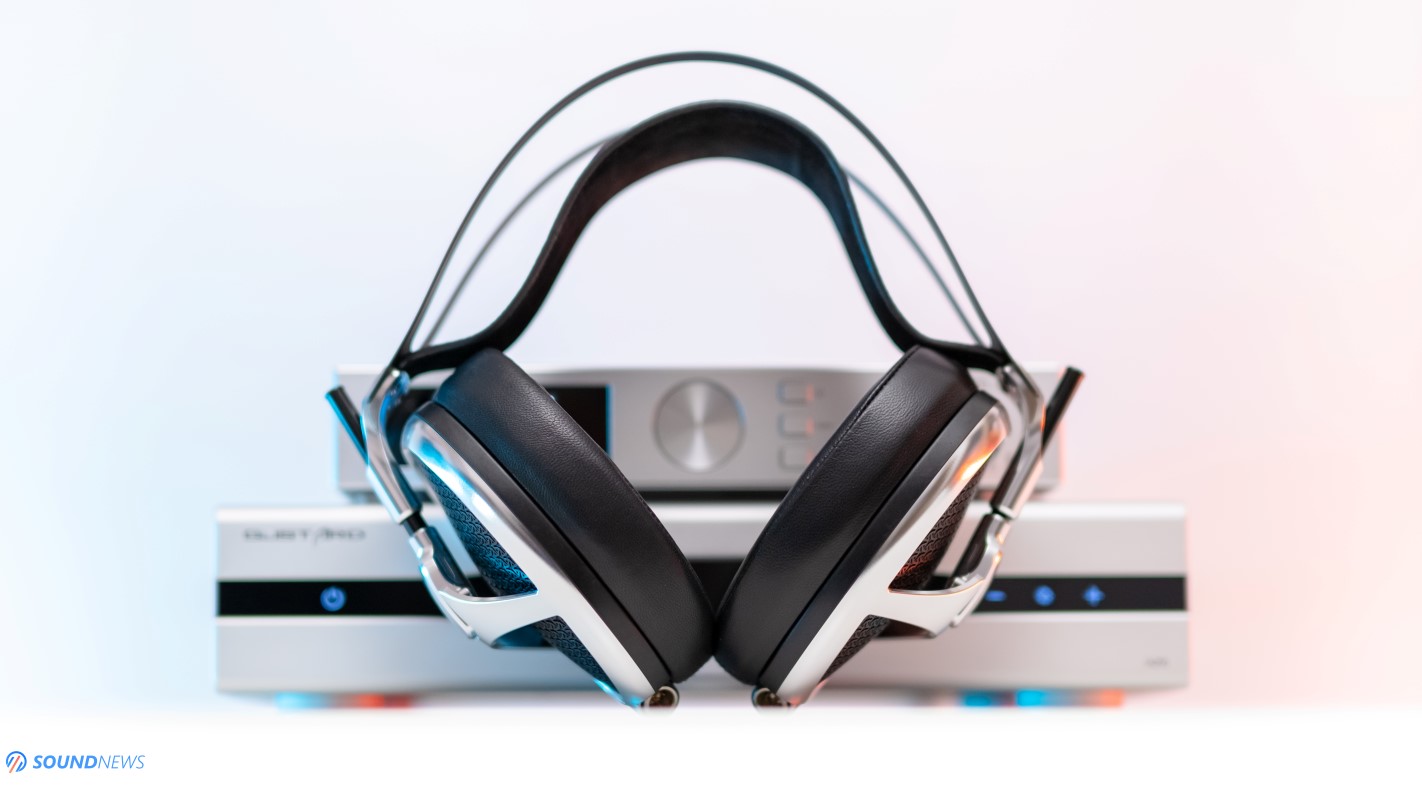
Overall score 94/100
Value 96/100
Background Noise 95/100
Resolution 94/100
Dynamics 95/100
Frequency Response 95/100
Stage Size 92/100
Build Quality 93/100